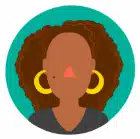According to the National Institute of Mental Health, 50% of all lifetime cases of mental illness begin by age 14 and 75% by age 24. The resources included in this blended learning playlist will help you begin meaningful conversations and interventions within the classroom. By exploring topics such as body image, social media, bullying, and self-regulation, students will embark on a positive pattern of discussing and examining their feelings instead of acting too hastily on them or sweeping them under the rug.
Gray Matters: Mental Health Awareness Curriculum

Managing Anger and Frustration
What Do You Do with that Mad You Feel: Strategy Song and Activity | Daniel Tiger’s Neighborhood
Daniel Tiger takes control of his feelings when he’s mad in this video clip. He sings a song about feeling mad and learns that if he’s feeling mad it’s up to him to turn his feelings around so that he can have fun again. The learning goal of this clip is to help children deal with their mad feelings.
Body Image
I See You, You See Me | Tolerance.org
This series help students think about their bodies and body images in a social justice context. Each lesson looks at a different aspect of the relationship children have with their bodies. The series helps students take ownership over their own feelings and attitudes and develop an activist stance in terms of understanding body image and also looking after their own physical and emotional wellbeing.
Dove Self Esteem Project | Dove
These interactive workshops were designed to facilitate discussions about body image with middle school students. Videos, activities, and reflections will introduce the topic of body confidence and work through the myths that may be affecting your students’ self esteem.
Bullying

Social Media & Mental Health
Social Media, Girls and Depression | Listenwise
Studies show that teen girls are more vulnerable to depression. In fact, girls are three times more likely than boys to become depressed, due in part to social pressures such as the overemphasis on physical appearance and the prevalence of social media. Not only are girls more likely to use social media, they also appear to be more vulnerable to the emotionally damaging effects of a constant, virtual connection. Listen to learn more about trends in teenage depression and the role of social media.
Bad Behavior Online: Bullying, Trolling & Free Speech | Off Book
The internet is a powerful tool for communication, but it can sometimes be a double-edged sword. As most of us have seen or experienced, the internet can bring out the worst behavior in people, highlighting some of the cruelest and most hurtful aspects of humanity. Issues such as bullying online and trolling have garnered a lot of attention recently, prompting questions about who does, and should, regulate the internet, and what free speech means online.

Eboni Hogan
Eboni has extensive experience in curriculum development, with a focus on culturally-responsive and arts-based approaches. Having spent years creating academic content and providing professional development to teachers, she now curates themed playlists meant to provide educators with valuable, time-saving resources.
Want to create your own themed teaching playlist?
Search by standard, subject, grade, or publisher to quickly create a themed blended learning playlist with the Kiddom content library.


